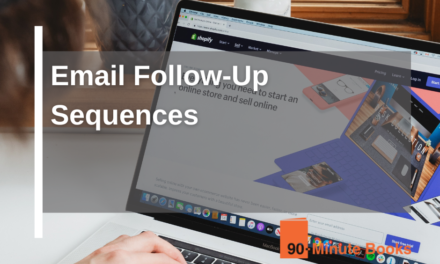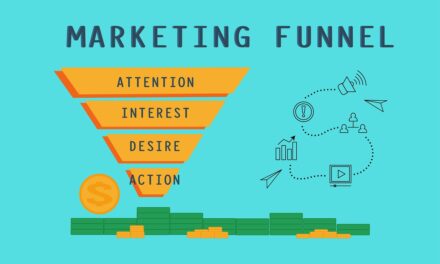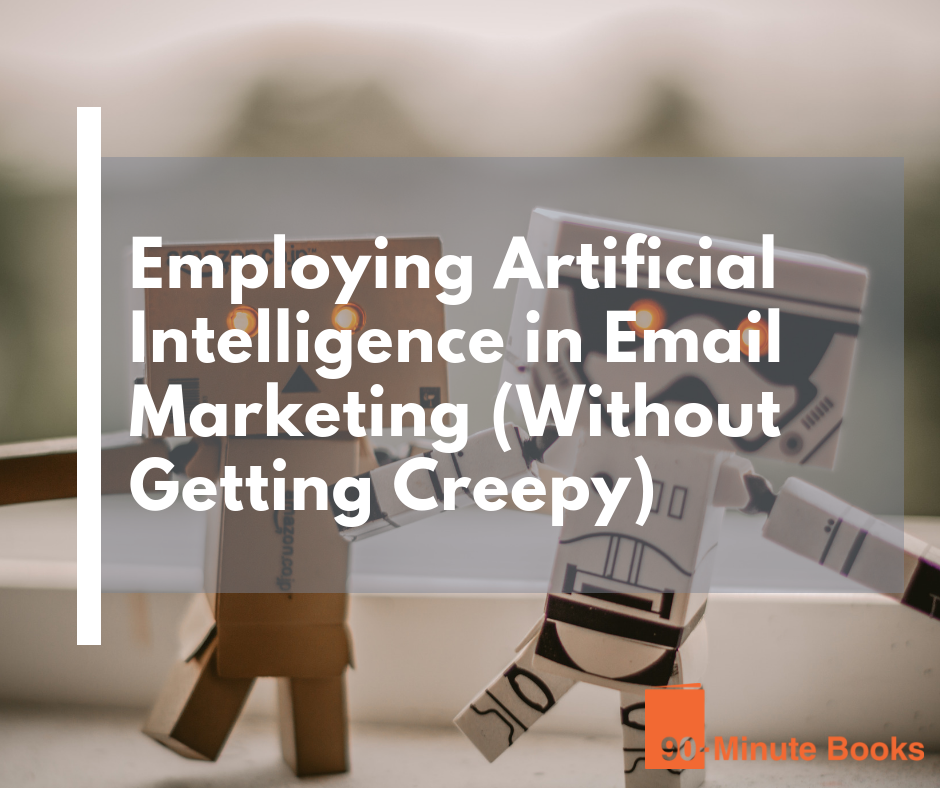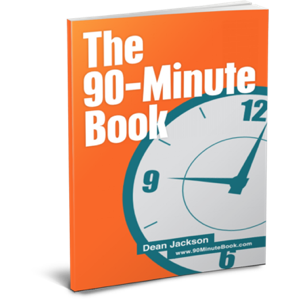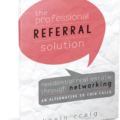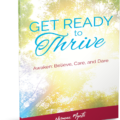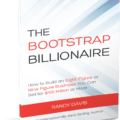Seth Godin contends that competing for individuals’ attention should be the primary focus of marketing. Sadly, the majority of email marketers are failing to be triumphant in this battle. Many marketers create mailing lists that require recipients to opt in. However, many people who have done this are not active participants in the list.
This is totally unsatisfactory, and it absolutely needs to be remedied. The following are the top ten tactics being implemented by email marketing professionals to address this worsening issue.
1. Craft the series of emails you’ll send to win them back
It is time to fight the apprehension and compose the primary message to attract them back.
Once you have selected whether to admit the list or not to admit it in any way, it is time for you to come up with ideas for what you would like to express.
Viewing this initial email as if it were a greeting would be beneficial.
This is an effective way to make a first (or renewed) impression where your unique personality can be highlighted.
Greetings emails are very effective, allowing you to reconnect with your followers in a reliable way that lets them perceive you as a real person.
WordStream discovered that welcoming emails earn more than three times more revenue with a dramatic jump in open and click-through rates.
Irrespective of your choice, you will want to send out messages to your customers in a particular order to dazzle them.
You do not need to rigidly abide by a predefined model. But some emails are most successful when sent in a specific sequence.
Here’s a great way you can order your emails.
Create a series of emails that looks something like this:
- EMAIL #1: Introduce (or re-introduce yourself) with something similar to a welcome email. Let them know in the next email you’ll be sending out a mind-blowing freebie just for them. This will help with your open rates with the rest of your emails.
- EMAIL:#2 Send out the freebie you promised. Go out of your way to ensure it’s not your usual, regurgitated checklist freebie that everyone has 100 off. Remind them why you’re worthy of being in their ever-so-busy inbox with a freebie that blows their mind! Let them know what’s to come in the next email to improve your chances of it being opened and keep them engaged.
- EMAIL #3:Send an email with your best resources. Don’t fill this with affiliate links. Of course, you can sprinkle a few in there, but it may leave a bad taste in their mouth if you’re already asking them to purchase products or services when you still haven’t fully won them back. You could collect free resources from around the web that resonate with your target audience. Get creative!
- EMAIL # 4: Lastly, you should let your subscribers know what they can expect you going forward. Make sure this is a realistic goal, or you’ll be right back where you started. You may want to include links to that dazzling freebie you offered in email #2, just in case they missed it.
If you inform your subscribers of your whereabouts or address your absence, it is best to include this in your first email.
You decide how to start that section of the email, but these are several ideas.
You can start off by saying several things like:
- “I’m sorry…”
- “Remember us?”
- “I’ve messed up big-time..”
- “Will you forgive me..”
And the list goes on!
An abundance of templates available can be utilized to help you craft that initial email, especially if you are informing them of your absence.
However, the reality is that many will not be aware of any variation.
And don’t take this personally!

FREE BOOK
Discover the 5 Compelling Book Titles Types that create an ‘I Want That…’ response.
2. Make sure your emails are relevant.
Brad Dixon from CC Studio takes an old-school approach when contacting email leads.
I ensure that my list contains up-to-date information by including recent events and topics of interest. If all they ever hear from me are pitches attempting to make a sale, they will become disengaged since they can accurately predict the content. Give your readers something they would be interested in, and don’t forget to mention every now and then, “By the way, we have a possible solution for that!”.
Consumers are overwhelmed with email these days. A new report from DMR deduces that, on average, a person who is employed in an office setting receives 121 messages in their inbox daily, and only 18% of those kicked off with a mouse click when it comes to promotional emails in the United States.
Yet, when done right, the results are tremendous. Research from Campaign Monitor found that the monetary benefit of emails is tremendous, with $44 gained with every dollar put into it. Giving out data that applies to each subscriber’s interests and preferences, based on what they shared with you when they registered, will significantly enhance your success rate.
3. Define inactive
Before we take any steps to re-attract people who have not responded to our offers, we should first decide what constitutes an inactive lead in our database. Most marketers will classify those who have not reacted, opened, clicked or taken action on any email sent in the last 6-12 months as Inactives.
This is a major difficulty in email promotion as the normal list’s level of inactivity is approximately 60%. This implies that out of the 10,000 on the list, only 4,000 read the posts. Considering that digital marketers devote a great deal of energy to establishing their lists, it is a major loss in participation and income if 60% of the list does not react after registering.
4. Trim your email list
Carol Tice from the Freelance Writers Den is an outstanding email marketing practitioner. As part of her group, I observe her consistently dispatching terrific emails. Nevertheless, not all of her followers are as enthusiastic about her program.
She is expending a lot of capital and resources on individuals who will not become customers. She takes them off her register for those who do not participate.
I recently removed inactive subscribers from my email list – roughly 500 individuals. I initially sent them a message asking, “Am I too tedious for you?” and asked whether they wanted to remain subscribed. We received responses from 20 individuals, so we eliminated the remainder of the list.
I loved cutting them…now I have better open rates. I offer many complimentary items to those on my email list, so I preferred to avoid providing these items to individuals who don’t care.
5. Find out what your list thinks of you.
Around the clock, each month, Forward Progress, run by Dean DeLisle, sends out many millions of emails for its own purposes and for customers. This means a clean list is essential to success.
We recently collaborated with a mortgage business to get their contacts list back in action. The bank had a substantial repository of information, yet it did not have any connection to that data.
What method are we going to use to initiate this data? We examine possibilities that will be of aid to those in the database. It is essential to comprehend the current state of the relationship. If the answer is nowhere, you need to reinvigorate.
We conducted a survey to explore the connection. In return, we gave you a $5 Starbucks card. The investment paid off because the relationships came back.
The number of individuals invited to complete the survey was 3268, and the total number of people who responded was 322. That is about 10%. Our satisfaction rate reached 3%, so our re-engagement campaigns were effective.
The numbers do not accurately reflect an important part of reviving expired leads. You won’t be able to get back all your potential customers, but this is a good thing. Those who do not react are not deserving of your energy. Rather than wasting resources on the 90% who do not have much interest in dealing with the bank, it can now concentrate on the 10% who are interested.
6. Re-build the relationship
Sotiris Bassakaropoulos and Dean DeLisle have a comparable approach to their internet marketing ventures. He regularly interacts with different lists for various companies.
He recently reconnected with his email subscribers to promote his new World Internet School website. He revisited three lists containing 4,000, 3,000, and 3,700 members individually.
Rather than contacting them with a sales presentation telling them to buy a certain product or service, I provide them with useful data in a virtual meeting to assist their company’s growth.
After the Hangout, I proposed my business idea. The majority of the Hangout focuses on providing information, then, at the conclusion, attendees can join my business.
Bassakaropoulos sees up to 30 individuals at the seminar. Within three days, the video receives a hundred views, usually with a 5% success rate for the items and services it offers.
7. Include calls to action
Erik Harbison, Chief Marketing Officer at AWeber, demonstrated how to reengage former subscribers.
Identify subscribers who have not opened emails sent to them or clicked links contained within them during the last three to six months. Send them a series of re-engagement emails.
Here are some strategies you can use. You can send emails, allowing them to alter the frequency of emails they receive or requiring them to click a link to stay on the mailing list. It is key to incorporate an ask in your emails, particularly when sending re-engagement emails, so those who are still engaged are clearly different from those who have lost interest.
Use a simple, clear, and effective call to action.
8. Give subscribers options
Diana Primeau, the Director of Member Services for CNET, explained how to get inactive email subscribers back to actively participating.
“Give them two options. Don’t miss the latest updates in people’s email inboxes daily. The second blog post is about current technology and the newest released items. That section of the email was the most popular.
9. Use Facebook Custom Audiences
You can now use Facebook Ads Editor’s fresh custom ad setup to upload your entire email list to Facebook and set up a campaign aimed precisely at your customers. This is an excellent approach for contacting a retail audience that is present on Facebook but is not currently on your subscriber list.
10. Offer a show-stopping freebie.
We discussed that you are expected to distribute a valuable complimentary offering (generally known as a lead magnet). However, you may still be doubtful of what type of freebie you can present that will be unique.
You want to resurrect your email list for good. So, of course, it has to be show-stopping.
But don’t overthink it.
You might possess something that you overlooked and weren’t aware of.
We can rephrase it: You want your freebie to be so great that people may wonder why it’s free.
If you have something of worth (not an extensive and expensive course) already paid for, that can be your giveaway.
Retaining the most actual, authentic subscribers could be favorable because this is a single exclusive opportunity.
Don’t worry if you don’t have a product for which you’re receiving payment. You can whip up something ultra-valuable in no time!
How do I create a freebie full of value?
The key element of an amazing giveaway that conveys worth is to generate something that appeals to your followers and offers enormous value.
The entire objective of creating content is to assemble it carefully so that it can aid your spectators in addressing their personal tribulations, tests, and aspirations.
The freebies you offer on your blog should benefit your readers in some way. Otherwise, what’s the point?
When reviving your email list, make sure you put in a lot of effort to create the best freebie possible.
If you successfully achieve this, the free product you offer will probably motivate them to keep their subscription to your email list.
If it doesn’t happen, just remember that some of your subscribers are not contributing, to begin with.
So it’s okay to let them go!
By doing this, you are creating space for individuals who genuinely have an interest in what you offer and are dedicated to your business.
If you’re unsure what kind of free item to make if you do not already have any purchasable items like a small e-book up for grabs, here are some options.
Freebie Ideas:
- E-book
- A free course ( not a course worth hundreds, but an e-course in the $30-60 range would be ideal)
- Free workshop or video training
- Valuable cheatsheet
- Email course
- A workbook
- Swipe files
- A high-quality checklist (if you’re going to offer a checklist, ensure it’s valuable and highly helpful for your audience. And if you can, add another freebie, like a workbook, to boost the value).
No matter what complimentary item you choose to provide, it cannot be emphasized enough: make this complimentary item (or gifts if you want to really make them happy) as related and valuable as you can.
Secure this, and you will quickly be able to recapture subscribers who have not responded for an extended period.
Guest Post Disclaimer
The views expressed in this post do not represent the views of 90-Minute Books. The information has not been verified and should be considered an opinion. You are always advised to do independent research.


